
Overview
GAO Tek’s hydrogen chloride gas detectors for electronics in the U.S. and Canada, ensuring compliance, efficiency, quality and software integration. The electronics industry encompasses the design, manufacturing, and distribution of electronic devices and components. It is a rapidly evolving sector driven by technological advancements and consumer demand. Key segments include consumer electronics, such as smartphones, laptops, and televisions, industrial electronics, automotive electronics, and medical devices. Innovations such as Internet of Things (IoT), artificial intelligence (AI), and 5G technology continue to shape the industry landscape, fostering connectivity and automation. Major players range from multinational corporations like Apple, Samsung, and Intel to smaller niche firms specializing in specific components or applications. With globalization, supply chain management and sustainability have become critical concerns, impacting production practices and environmental responsibility. The electronics industry plays a pivotal role in shaping modern society, driving innovation across various sectors and enhancing the way we live and work.
Depending on specific features and functions, GAO Tek’s Hydrogen chloride gas detectors are sometimes referred to as HCL gas sensors, hydrochloric acid vapor detectors, chlorine hydride gas monitors, HCL gas alarms, chlorine gas detectors, hydrochloric fume sensors, hydrochloride gas analyzers, chlorine gas meters, HCL gas detectors and hydrochloric acid gas monitors.
Furthermore, GAO Tek’s hydrogen chloride gas detectors are further grouped into:
Alarm-enabled, Handheld, High precision, Data logging, Outdoor, Rugged and Wireless.
GAO Tek’s Hydrogen chloride gas detectors have the following applications in the electronics industry:
- Safety: GAO’s hydrogen chloride gas detectors ensure the safety of personnel by continuously monitoring HCl levels in the air, providing early warnings in case of hazardous concentrations.
- Compliance: These GAO’s hydrogen chloride gas detectors help electronics manufacturers comply with safety regulations by ensuring that HCl emissions are kept within permissible limits.
- Protection of Equipment: GAO’s hydrogen chloride gas detectors can cause corrosion to sensitive electronic equipment. Gas detectors help prevent damage by alerting personnel to potential leaks or spills.
- Risk Mitigation: By detecting GAO Tek’s hydrogen chloride gas detectors leaks promptly, gas detectors enable swift action to mitigate risks, preventing potential accidents or injuries in the workplace.
- Environmental Monitoring: GAO Tek’s hydrogen chloride gas detectors play a role in environmental stewardship by monitoring HCl emissions and helping to prevent air pollution.
- Research and Development: In laboratories where chemicals are used, GAO’s hydrogen chloride gas detectors ensure a safe working environment for researchers and prevent accidents during experimentation.
- Process Optimization: Continuous monitoring of GAO Tek’s hydrogen chloride gas detectors levels allow for the optimization of manufacturing processes, ensuring efficient and safe operation.
- Emergency Response: GAO Tek’s hydrogen chloride gas detectors facilitate rapid response in case of emergencies, enabling personnel to evacuate safely and emergency responders to take appropriate action.
More information on hydrogen chloride gas detectors and their applications in other industries can be found on
Hydrogen Chloride Gas Detectors
This category page lists related products
Systems in the Electronics Industry Utilizing Hydrogen Chloride Gas Detectors
Here are some popular systems in the electronics industry using hydrogen chloride gas detectors:
Etching Process Control Systems:
- Gas Detection Management System (GDMS): GDMS is comprehensive software designed for monitoring and managing gas detection systems in electronics manufacturing facilities. It provides real-time data visualization, customizable alarm settings, and remote monitoring capabilities, allowing operators to track HCl levels during the etching process.
- GasAlert MicroClip XL: GasAlert MicroClip XL is a portable gas detector with advanced features suitable for monitoring HCl emissions in etching processes. It offers continuous monitoring, audible and visual alarms, and datalogging capabilities for compliance reporting. Its compact design and robust construction make it ideal for use in various industrial environments.
Soldering Fume Extraction Systems:
- Airwave Management Software (AMS): AMS is a software platform designed to optimize fume extraction systems in electronics manufacturing facilities. It integrates with hydrogen chloride gas detectors to monitor HCl levels in soldering operations and adjust extraction parameters accordingly. AMS provides real-time analytics, predictive maintenance alerts, and remote monitoring capabilities for efficient operation.
- Ventis Pro5: Ventis Pro5 is a multi-gas detector suitable for monitoring HCl levels in soldering environments. It features a robust design, intuitive user interface, and customizable alarm settings. Ventis Pro5 offers real-time monitoring, datalogging capabilities, and wireless connectivity for seamless integration with fume extraction systems.
Cleanroom Air Quality Monitoring Systems:
- Cleanroom Monitoring System (CMS): CMS is a software solution specifically tailored for monitoring air quality in cleanroom environments within the electronics industry. It integrates with hydrogen chloride gas detectors to monitor HCl levels and other contaminants, ensuring compliance with cleanliness standards. CMS offers real-time monitoring, historical data analysis, and automated reporting features for maintaining optimal air quality.
- Aeroqual Cloud: Aeroqual Cloud is a cloud-based environmental monitoring platform suitable for cleanroom applications. It supports integration with hydrogen chloride gas detectors to monitor HCl levels and other air quality parameters. Aeroqual Cloud offers remote access, customizable dashboards, and alerts for proactive management of cleanroom environments.
Chemical Handling and Storage Safety Systems:
- ChemAlert: ChemAlert is a comprehensive chemical management software designed to ensure safety in handling and storing hazardous substances, including hydrogen chloride. It integrates with gas detection systems to monitor HCl levels in storage areas and chemical handling facilities. ChemAlert provides chemical inventory tracking, safety data sheet management, and risk assessment tools for compliance with regulatory requirements.
- Honeywell Safety Suite Device Configurator (SSDC): SSDC is a software tool developed for configuring and managing Honeywell gas detection devices, including those used for detecting hydrogen chloride. It allows users to customize alarm settings, calibration schedules, and reporting options for optimal performance. SSDC also offers firmware updates and device diagnostics for maintaining gas detection systems.
Emergency Response and Incident Management Systems:
- Emergency Response Management System (ERMS): ERMS is a software platform designed to streamline emergency response procedures in the event of HCl gas leaks or other incidents in electronics manufacturing facilities. It integrates with gas detection systems to trigger automated alerts, initiate evacuation procedures, and coordinate response efforts. ERMS offers real-time communication tools, incident documentation, and post-incident analysis capabilities for continuous improvement.
- Blackline Live: Blackline Live is a cloud-based safety monitoring platform suitable for emergency response applications. It supports integration with hydrogen chloride gas detectors to provide real-time location tracking and safety alerts during emergencies. Blackline Live offers two-way communication, automated incident reporting, and geofencing capabilities for effective incident management and response coordination.
GAO Tek’s targeted markets are North America, particularly the U.S. and Canada.
Complying with Government Regulations
GAO Tek’s hydrogen chloride gas detectors comply or help our customers comply with the U.S. government regulations such as:
- American National Standards Institute (ANSI)
- Department of Transportation (DOT)
- EPA National Emission Standards for Hazardous Air Pollutants (NESHAP)
- EPA Risk Management Program (RMP)
- International Building Code (IBC)
- International Fire Code (IFC)
- International Fuel Gas Code (IFGC)
- International Mechanical Code (IMC)
- International Plumbing Code (IPC)
- Standard on Fire Protection for Laboratories Using Chemicals
- National Electrical Code (NEC)
- NIOSH Pocket Guide to Chemical Hazards
- OSHA Hazard Communication Standard (HCS)
- OSHA Process Safety Management (PSM)
GAO Tek’s hydrogen chloride gas detectors comply or help our clients comply with the Canadian regulations such as:
- Alberta Occupational Health and Safety Code (OHSC)
- Canadian Centre for Occupational Health and Safety (CCOHS)
- Canadian Electrical Code (CEC)
- Canadian Environmental Assessment Act (CEAA)
- Canadian Environmental Protection Act (CEPA)
- Canadian Environmental Quality Guidelines (CCME)
- Canadian Standards Association (CSA)
- Health Canada’s Pest Management Regulatory Agency (PMRA)
- National Fire Code of Canada (NFC)
- Natural Resources Canada Explosives Safety and Security Branch (NRCan ESSB)
- Ontario Occupational Health and Safety Act (OHSA)
- Transportation of Dangerous Goods Regulations (TDG)
- Workplace Hazardous Materials Information System (WHMIS)
Case Studies of Hydrogen Chloride Gas Detectors in the Electronics Industry
Hydrogen chloride gas detectors are sometimes called HCL gas sensors, hydrochloric acid vapor detectors, chlorine hydride gas monitors, HCL gas alarms, chlorine gas detectors, hydrochloric fume sensors, hydrochloride gas analyzers, chlorine gas meters, HCL gas detectors and hydrochloric acid gas monitors.
Here are some practical examples of using hydrogen chloride gas detectors in the electronics industry:
A semiconductor manufacturing facility in Silicon Valley implemented hydrogen chloride gas detectors in its cleanroom environment to monitor potential leaks during the etching process. The detectors were integrated with the facility’s ventilation system to automatically adjust airflow and activate alarms if HCl levels exceeded safe limits. This proactive approach to gas detection helped prevent potential health hazards to workers and equipment damage, ensuring compliance with environmental regulations and maintaining a safe workplace environment.
A printed circuit board (PCB) assembly plant in New York City installed hydrogen chloride gas detectors in its soldering areas to monitor fume emissions. By continuously monitoring HCl levels, the plant could ensure worker safety and compliance with occupational health regulations. The detectors were linked to the plant’s central control system, allowing for real-time alerts and data logging. This proactive approach to gas detection enhanced workplace safety and improved operational efficiency by minimizing downtime due to safety concerns.
A large electronics manufacturing facility in Chicago implemented a comprehensive gas detection system, including hydrogen chloride detectors, throughout its production areas. By integrating gas detectors with the facility’s safety protocols and emergency response procedures, the company was able to effectively mitigate risks associated with HCl exposure. The detectors provided early warnings of potential leaks, enabling prompt evacuation and containment measures when necessary. This proactive approach to safety helped the facility maintain a high level of operational integrity and protect both workers and equipment.
A microelectronics fabrication plant in Austin, Texas, utilized hydrogen chloride gas detectors in its cleanroom facilities to ensure compliance with stringent safety standards. The detectors were strategically placed to monitor HCl levels in critical areas such as etching and cleaning processes. Real-time monitoring and alarm capabilities allowed the plant to respond swiftly to any deviations from acceptable levels, minimizing the risk of exposure to workers and preventing potential damage to sensitive equipment. This proactive approach to gas detection helped the facility maintain its reputation for safety and reliability in the industry.
A leading electronics manufacturer in Seattle implemented hydrogen chloride gas detectors in its research and development laboratories to ensure a safe working environment for scientists and engineers. The detectors were integrated with the facility’s ventilation system to maintain optimal air quality and prevent HCl exposure during experiments involving chemical processes. Real-time monitoring and alarm notifications enable rapid response to any potential leaks or spills, minimizing the risk of accidents and ensuring regulatory compliance. This proactive approach to gas detection contributed to the company’s commitment to safety and innovation.
A semiconductor fabrication facility in Toronto, Ontario, deployed hydrogen chloride gas detectors in its cleanroom environments to monitor HCl levels during wafer etching processes. The detectors were integrated with the facility’s control systems to provide real-time monitoring and automatic shutdown capabilities in the event of elevated HCl concentrations. This proactive approach to gas detection helped the facility maintain a safe working environment for employees while ensuring compliance with regulatory requirements.
A printed circuit board (PCB) manufacturing plant in Montreal, Quebec, installed hydrogen chloride gas detectors in its soldering stations to monitor fume emissions. The detectors were linked to the plant’s central monitoring system, allowing for continuous monitoring of HCl levels and immediate alerts in case of abnormalities. By implementing these detectors, the plant was able to enhance worker safety and ensure compliance with occupational health regulations, demonstrating its commitment to employee well-being and environmental stewardship.
A consumer electronics assembly plant in Vancouver, British Columbia, implemented hydrogen chloride gas detectors in its production areas to mitigate risks associated with HCl exposure. The detectors were strategically placed to monitor HCl levels in critical processes such as component soldering and cleaning. Real-time monitoring and alarm capabilities enabled prompt response to any deviations from safe levels, helping to protect workers and prevent damage to equipment. This proactive approach to gas detection enhanced the plant’s safety protocols and reinforced its commitment to employee welfare and operational excellence.
GAO RFID Inc. RFID Hardware, a sister company of GAO Tek Inc., is ranked as a top 10 RFID suppliers in the world. Its RFID, BLE, and IoT products have also been widely used in the electronics industry. Articles about related industries are given below:
Use of Hydrogen Chloride Gas Detectors with Leading Software and Cloud Services in the Electronics Industry
GAO Tek has used or has facilitated its customers to use GAO’s hydrogen chloride gas detectors with some of the leading software and cloud services in their applications. Examples of such leading software and cloud services include:
- Airsweb
- Chem ADVISOR
- Cority
- Dakota Software
- EHS Insight
- Enviance
- ERA Environmental
- Gensuite
- Intelex
- Safety Stratus
- Site Hawk
- Sphera
- Velocity EHS
- Verisk 3E
GAO Tek’s hydrogen chloride gas detectors and their applications in other industries are listed on
Hydrogen Chloride Gas Detectors
Other related products can be found on
Meeting Customers’ Demands
Large Choice of Products
In order to satisfy the diversified needs of their corporate customers, GAO Tek Inc. and its sister company GAO RFID Inc. together offer a wide choice of testing and measurement devices, network products, RFID, BLE, IoT, and drones.
Fast Delivery
To shorten the delivery to our customers, GAO has maintained a large stock of its products and is able to ship overnight within the continental U.S. and Canada from the nearest warehouse.
Local to Our Customers
We are located in both the U.S. and Canada. We travel to customers’ premises if necessary. Hence, we provide a very strong local support to our customers in North America, particularly the U.S. and Canada.
Furthermore, we have built partnerships with some integrators, consulting firms and other service providers in different cities to further strengthen our services. Here are some of the service providers in the electronics industry we have worked with to serve our joint customers:
- Accenture
- Agilent Technologies
- Analytix DS
- Avantor
- Becton, Dickinson and Company (BD)
- Capgemini
- CGI Group
- Cognizant
- Deloitte
- IBM
- Infosys
- PerkinElmer
- PwC (PricewaterhouseCoopers)
- Thermo Fisher Scientific
- Wipro
GAO has Many Customers in the Electronics Industry
The products from both GAO Tek Inc. and GAO RFID Inc. have been widely used in the electronics industry by many customers, including some leading companies. Here is more information on applications of GAO RFID Inc.’s products in the electronics industry. Articles about related industries are given below:
Information, Electronic and Telecommunications Industries
Here are some of GAO’s customers in the electronics industry:
- Analog Devices, Inc.
- Apple Inc.
- Ballard Power Systems Inc.
- BlackBerry Limited
- Celestica Inc.
- Corning Incorporated
- Dell Technologies Inc.
- Garmin Ltd.
- Hewlett Packard Enterprise Company
- IBM (International Business Machines Corporation)
- Intel Corporation
- Micron Technology, Inc.
- Motorola Solutions, Inc.
- OpenText Corporation
- Rockwell Automation, Inc.
- Shopify Inc.
- Texas Instruments Incorporated
- Western Digital Corporation
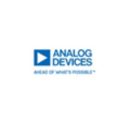





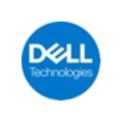



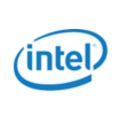
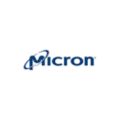


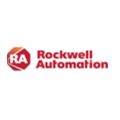

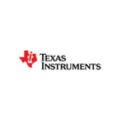

Contact Us
Here are GAO Tek’s Hydrogen chloride gas detectors and they are further organized by feature:
Alarm-enabled, Handheld, High precision, Data logging, Outdoor, Rugged and Wireless.
If you have any questions about our products or want to place an order, our technical experts can help you.
Please fill out this form or email us
